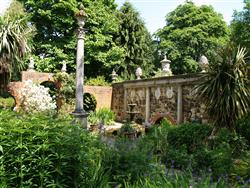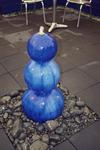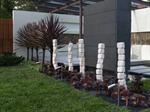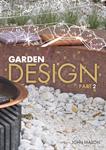Choosing And Using Statues And Sculptures For Your Garden
Garden statues, sculptures and ornaments fit well into most gardens. These are often the things which put the finishing touches to a garden. They can be set simply amongst shrubbery, partly obscured from view, or made a more obvious feature and placed on columns, piers and pedestals at various points in the garden such as in grottos, alcoves or at the end of a path or the centre of a pond.

Using Statuary
Statuary can be used subtly or in a formal setting. To make these features more eye-catching consider the following:
- Surrounding with plants will enhance the feature and not compete. This may mean using plain evergreens or a single flower colour around the statue.
- Limit the number of ornaments in an area. If you have several pieces that you want to use, make sure they are visually separate.
- Make sure the ornament enhances and blends with the garden.
- Formal pieces are best in a formal setting.
- Cute pieces such as animals are better in an informal or country style garden.
Garden and Statue Styles
The style of a garden must first be determined before considering the use of statues and sculpture. Ask yourself:
- What is the style of my garden?
- Where are the best focal and view places in my garden?
- Why do I feel a statue or sculpture is wanted?

If your garden is of traditional style (i.e. with strong geometrical shapes, obvious elements of balance and structure and well maintained hedges and plants) then you may benefit from items that are also traditional. For example, statues of Greek gods, prominent water fountains, etc.
If you garden has a bush-like setting with predominantly natural vegetation, then items that are rustic and earthy may be more appropriate. Placing a statue of David in a native bush garden would not be advisable. If your house and garden are very modern and recently constructed, it would most probably exhibit clean crisp lines and strong geometrical forms and fencing. In this situation a modern sculpture may be most suitable.
Materials

After deciding on your style parameters, think about the material for the sculpture. If the item is to be placed outdoors throughout the year, consider the effects of sun, wind, frost, salt breezes, bird droppings and acid rain. Common materials include:
- Metal
- Can be long lasting and looks fantastic (especially if brass or stainless steel). It will however corrode over time. If the sculpture has moving parts then these may stop moving as corrosion accumulates.
- Ceramics
- Available either as a porous or non-porous item. Most gardeners will come across ceramic pots however garden figures are also available. They are prone to breakage as they are brittle and thin. It can discolour over time.
- Concrete
- Used to mass produce reproductions of common garden statuary like gnomes, small bird baths, and small figures. Concrete may crack, and where limbs of figurines are involved, they may fall off. Concrete can be dressed up with the use of rendering, tiles and paint.
- Plaster
- Used to make very cheap garden items. However the life of these items is very short - plaster can bubble and collapse.
- Stone
- Has always been a favourite to gardeners. It has a long life but can weather to give an ancient and well aged look.
- Timber
- Occasionally used for garden art. Overtime however it may rot if not treated.
So, to give your garden that finishing touch, have a look at some eye catching statues or sculptures. Pick a material suitable to your climate, and an item that fits the style of your garden.
After you’ve picked the perfect position for your new acquisition, the only thing left to do is to sit back and enjoy the fruits of your labour.
Want to Know More?
Consider doing a course or buying a reference book from our school.
If you would like to communicate with one of our professional tutors, consider using our free course counselling service. click for details
If you want to browse our bookshop, go to www.acsbookshop.com
VISIT OUR ACS ONLINE E BOOKSTORE
 Quality ebooks written by our staff
Quality ebooks written by our staff- Wide range of Horticulture titles by John Mason, author of over 40 gardening books, garden magazine editor, nurseryman, landscaper and principal of ACS.
- Ebooks can be purchased online and downloaded straight away.
- Read on an ipad, computer, iphone, reader or similar device.
- New titles published every month –bookmark and revisit this site regularly
- Download sample pages for free, to see what each book is like.
More from ACS
Ebook - Inspiring: covers formal, natural, eclectic, modern, oriental, Mediterranean; zoom in on stunning images and plans.
View eBook
Ebook - Explores garden design ideas and inspires
garden design and landscaping!
View eBook
Enhance your design skills and apply them to various garden styles.
View Course
Ebook - 108 stunning pages and photos: ideal for landscapers, gardeners and home gardeners interested in creating beautiful water features.
View eBook
Course - draw designs, survey sites, understand plants, soils, timbers, climate, and other landscape materials pivotal to the success of a good landscape design.
View Course
Become a Landscape Professional in 2 to 3 years
View Course